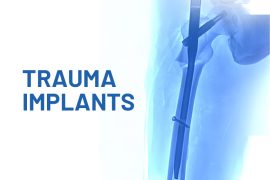Hernia’s are a common ailment with over 10% of the world, men, women and children, developing one at some point in their life. It occurs when an organ pushes through the muscle or tissue opening holding it in place. A hernia is referred to the sac that consists of the lining of the peritoneum/abdominal cavity after it enters through the hole in the stronger muscle region of the abdominal wall surrounding the muscle or fascia. A hernia may be visible as a bulge in the abdomen, upper thigh, belly button and groin areas, depending on the location of its occurrence. Groin hernias are the most common, making up to 9/10 of hernia cases.
Types of hernia: 1. Inguinal Hernia: Occurring mostly in men due to the improper closure of the inguinal canal after postpartum testicle descent. This is a groin hernia. 


2. Incisional hernia: When the organ pushes through the surgical incision after surgery, mostly abdominal. It can occur many years later through the scar of the initial surgery too. 


3. Femoral Hernia: Another groin hernia, but one which is more common in women. Usually observed as a bulge on the upper thigh, exactly below the groin. 


4. Umbilical Hernia: Almost exclusively seen in children and babies under 6 months old. This bulge around the navel is usually seen due to the improper closing of the muscles around the navel. 


5. Hiatal Hernia: This is an abdominal hernia that occurs in the stomach’s upper region. This is observed when a part of the stomach’s upper part enters the hiatus, an opening in the diaphragm. 


What can cause a hernia? A hernia is usually the result of a combination of weak muscles and straining due to lifting heavy objects. It is more likely to affect those born with weak abdominal muscles. 


How do I know if I have a hernia? In a majority of cases, hernia patients do not exhibit many symptoms. What they might complain of though , is discomfort or pain which is exacerbated during standing, straining or while lifting heavy materials. Another common symptom is a sore and growing bump in the abdominal area. Major symptoms like nausea, vomiting, not being able to expel gas or have bowel movements occur when the hernia is strangulated, i.e., when it gets stuck due to increasing size and restricted blood supply. This is a medical emergency and should be operated on immediately.
Is surgery the only option? Not in all cases. Hernia treatment depends on the size of the hernia and the severity of the symptoms. In mild cases, lifestyle changes and medication may be enough to manage the situation. This is mostly true for hiatal hernias where dietary changes like avoiding heavy meals, lying down or bending over after meals can alleviate the symptoms. Keeping one’s body weight in check can also help. Hiatal hernia patients can also benefit from medications like antacids, H-2 receptor blockers, and proton pump inhibitors that reduce stomach acid.
If the hernia patient requires surgery, there are two options available depending on their case history. ● Open hernia repair or herniorrhaphy: The patient is provided either spinal, general or a combination of both anesthesias. An incision is then made in the groin and the hernia is moved back into the abdomen and the wall is reinforced with stitches. The weak muscles are reinforced through hernioplasty wherein they are provided additional support through the use of a synthetic mesh or screen. ● Laparoscopic surgery: A minimally invasive option that takes place under general anesthesia. Three incisions are made in the abdomen, one of them being through the umbilicus. The laparoscope, which is a thin tube with a camera at its end is then inserted through the umbilical port or opening. The camera then sends a magnified image from inside the body to a monitor, which gives the surgeon a close-up view of the hernia and allows them to repair the hernia with the help of a mesh. Patients undergoing laparoscopy experience a much shorter recovery period overall.
The type of surgery one undergoes totally depends on the surgeon, the type of hernia, its size and the patient’s history.
Is the recovery very painful? As with any surgery, there is a certain level of discomfort that is to be expected. However, this can be managed with pain medication. Resumption of normal activities depends on the patient’s progress and doctor’s evaluation, though vigorous activity and heavy lifting are restricted for several weeks. This holds true for both adults as well as children.
Living with hernia is no joke and left untreated, can cause fatal complications. If you or your loved ones are exhibiting symptoms of hernia, then going to a doctor for a full evaluation of the condition is a must. Early treatment is the best way to ensure a positive outcome.




